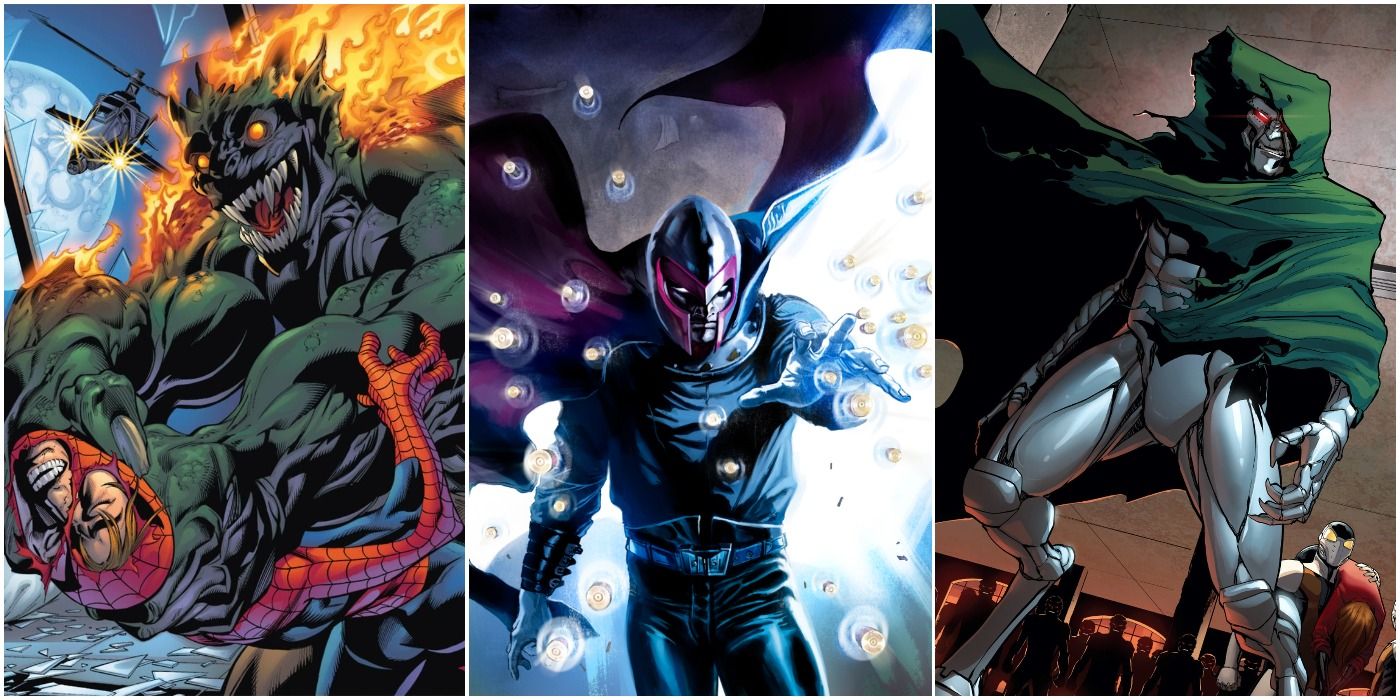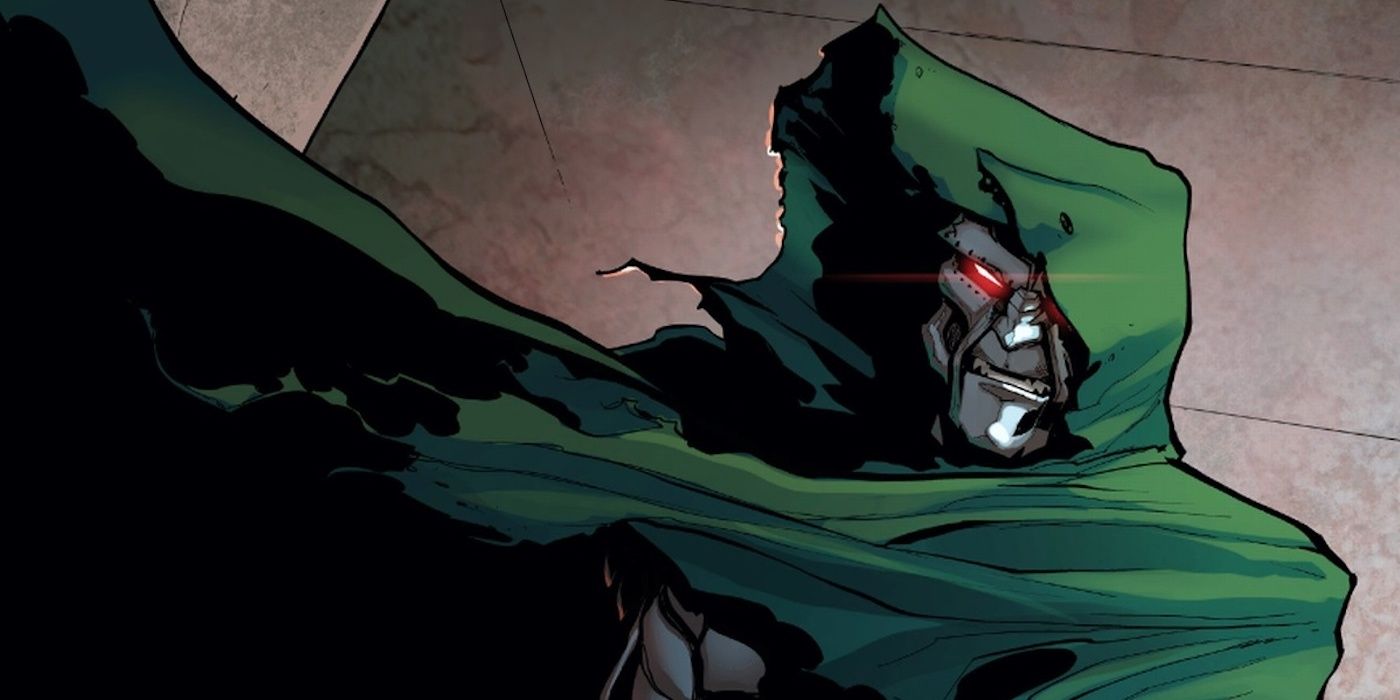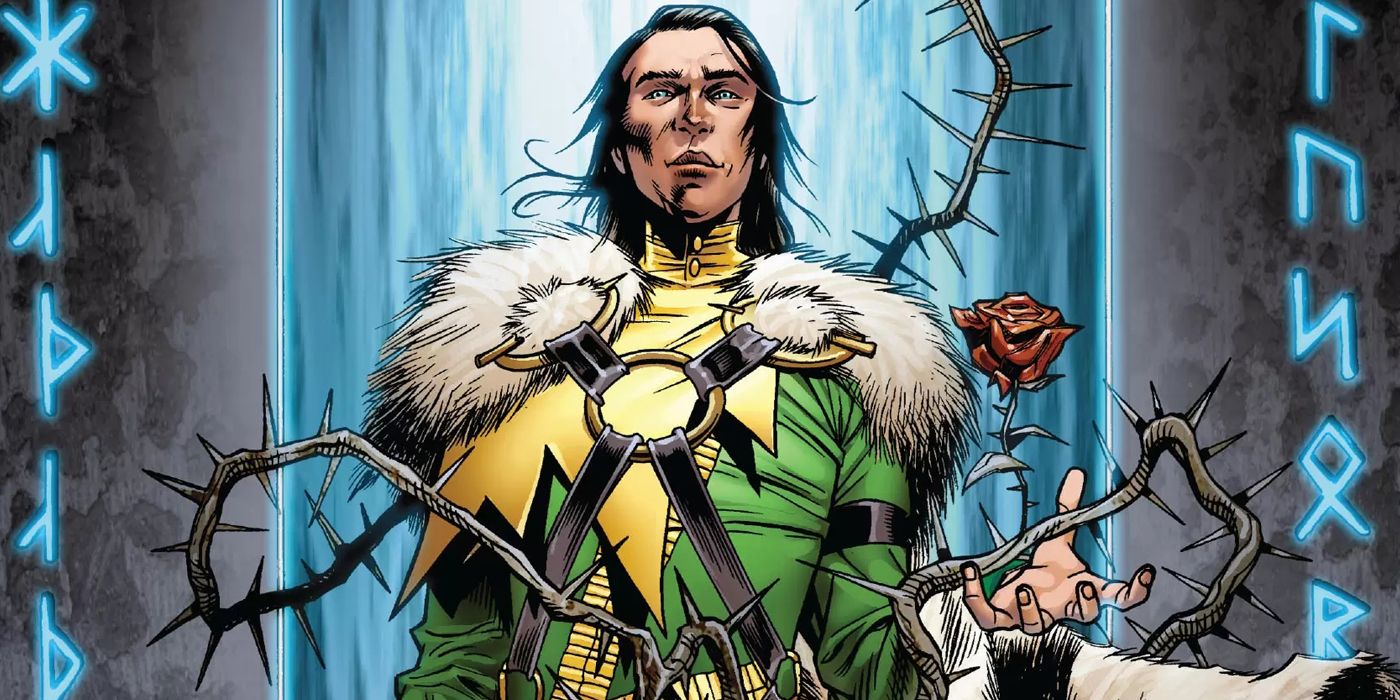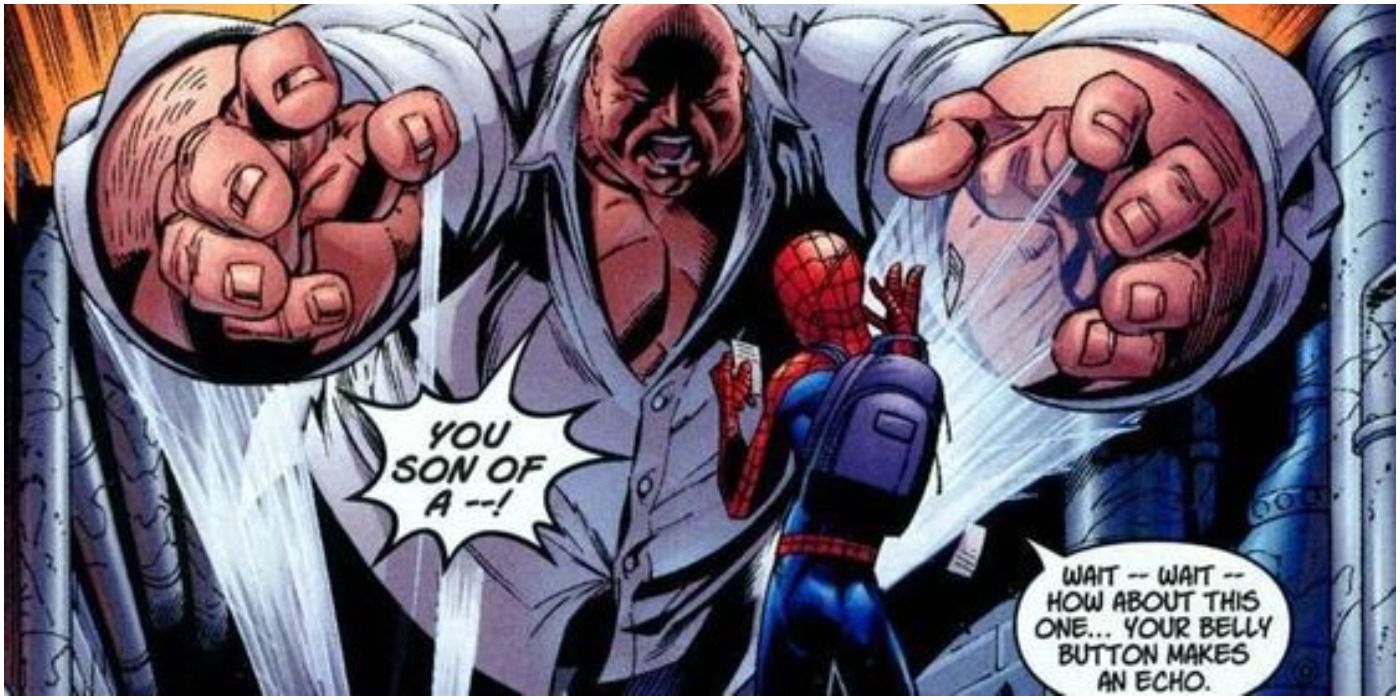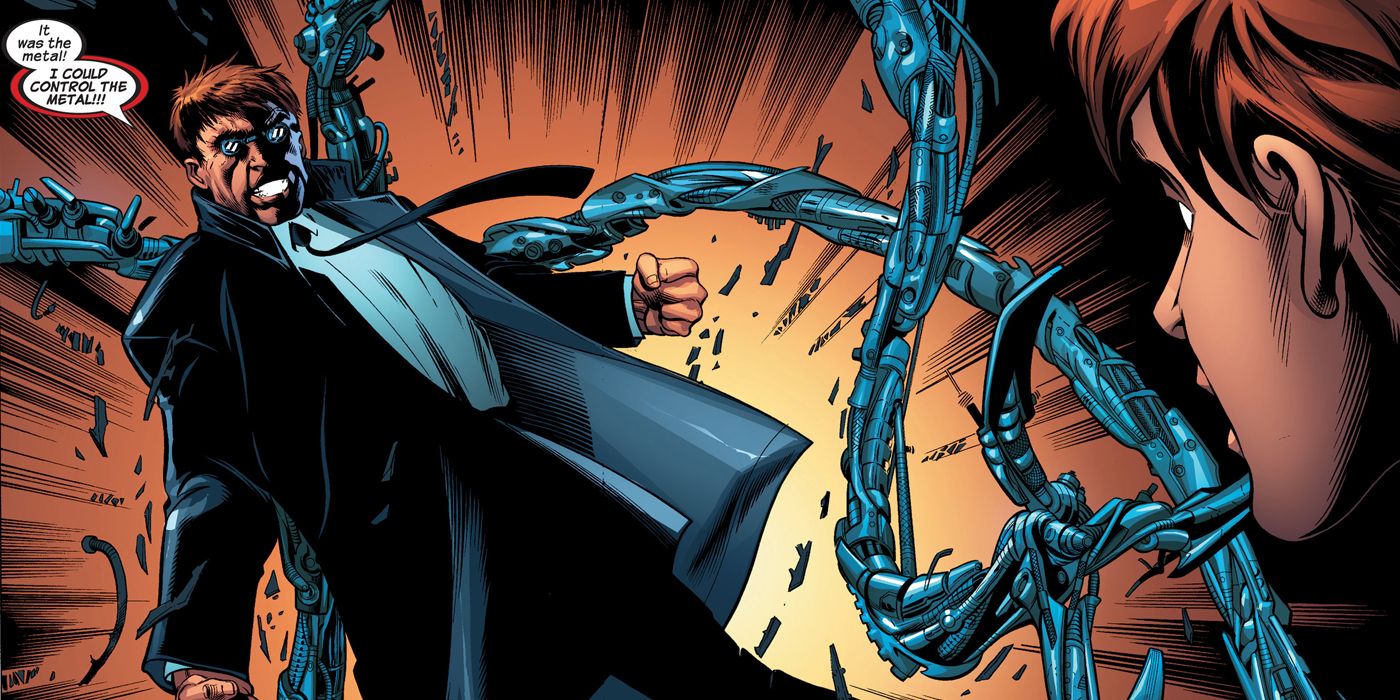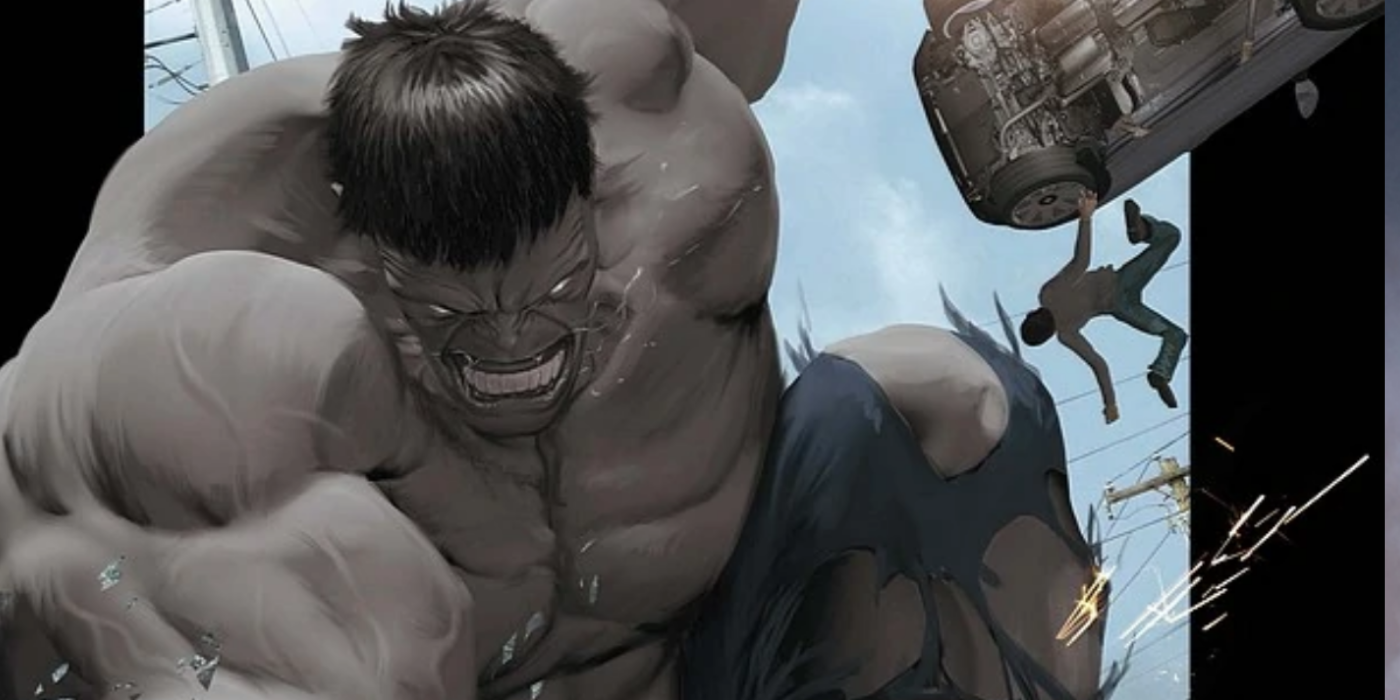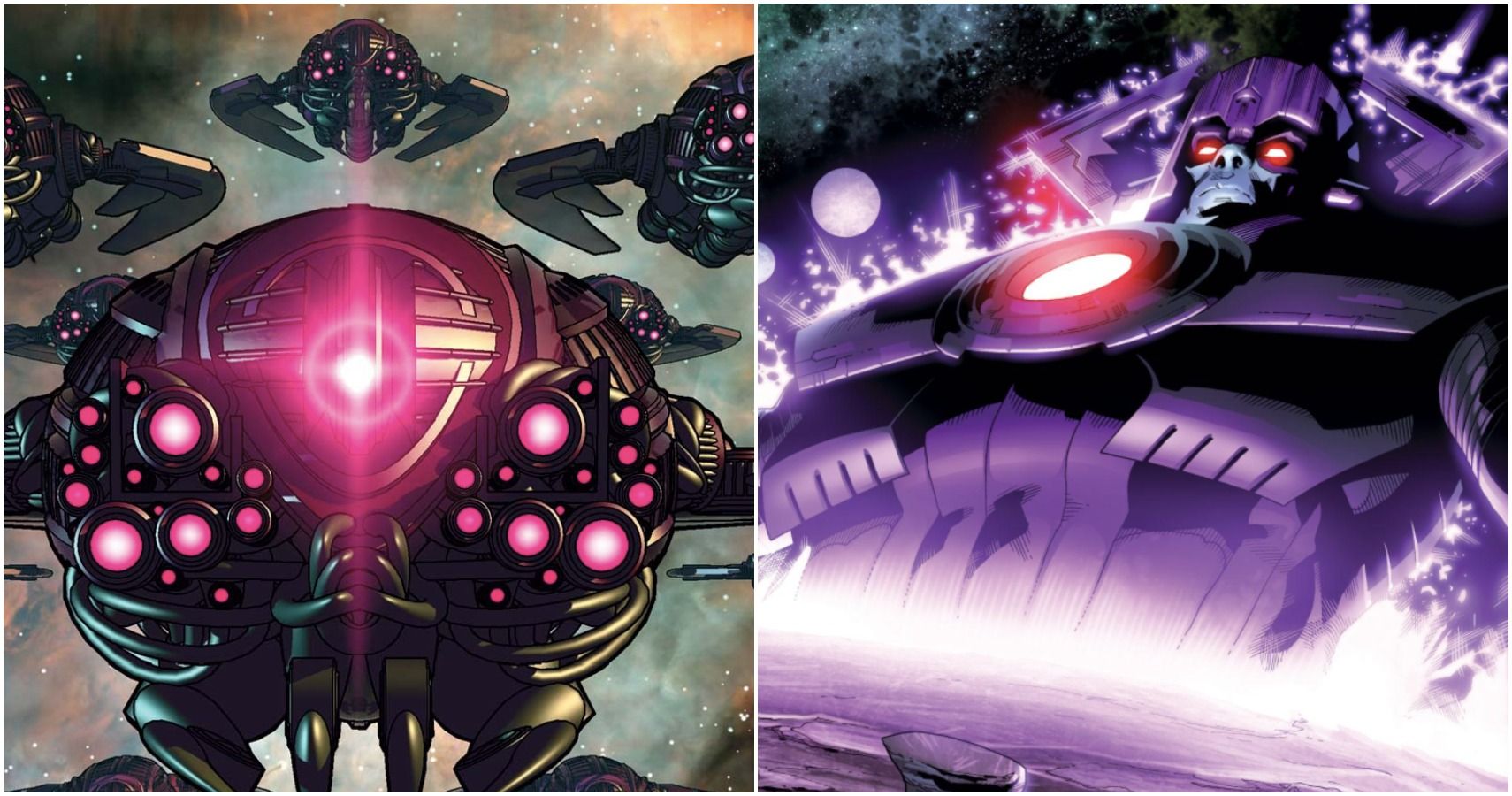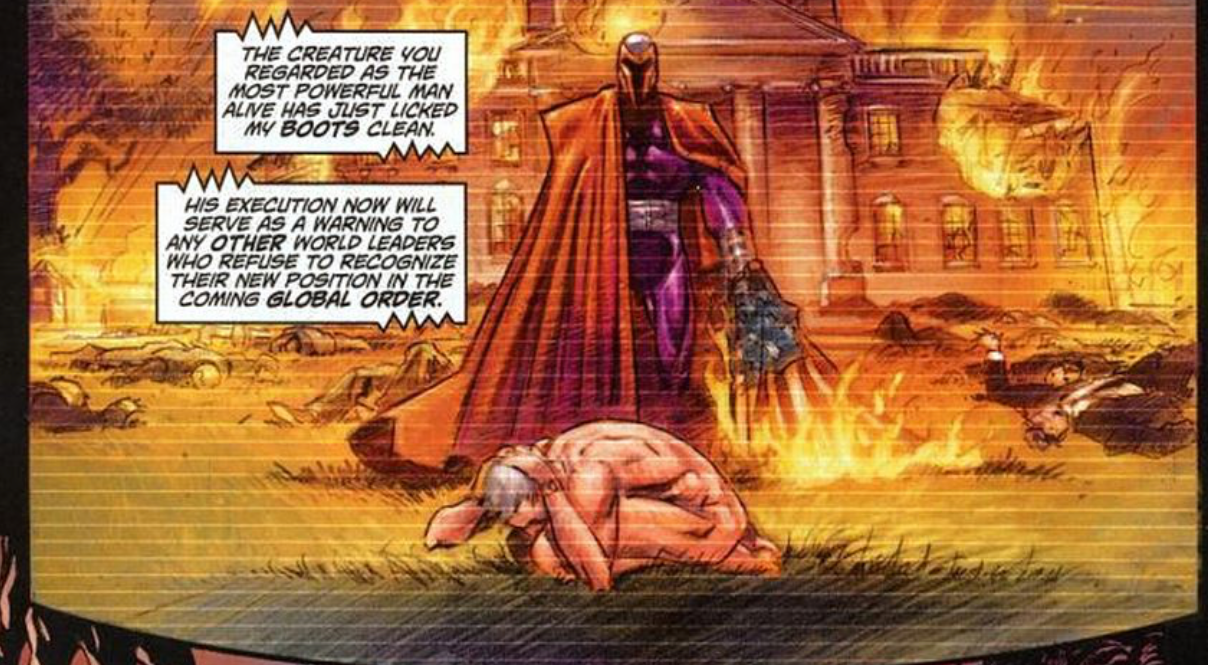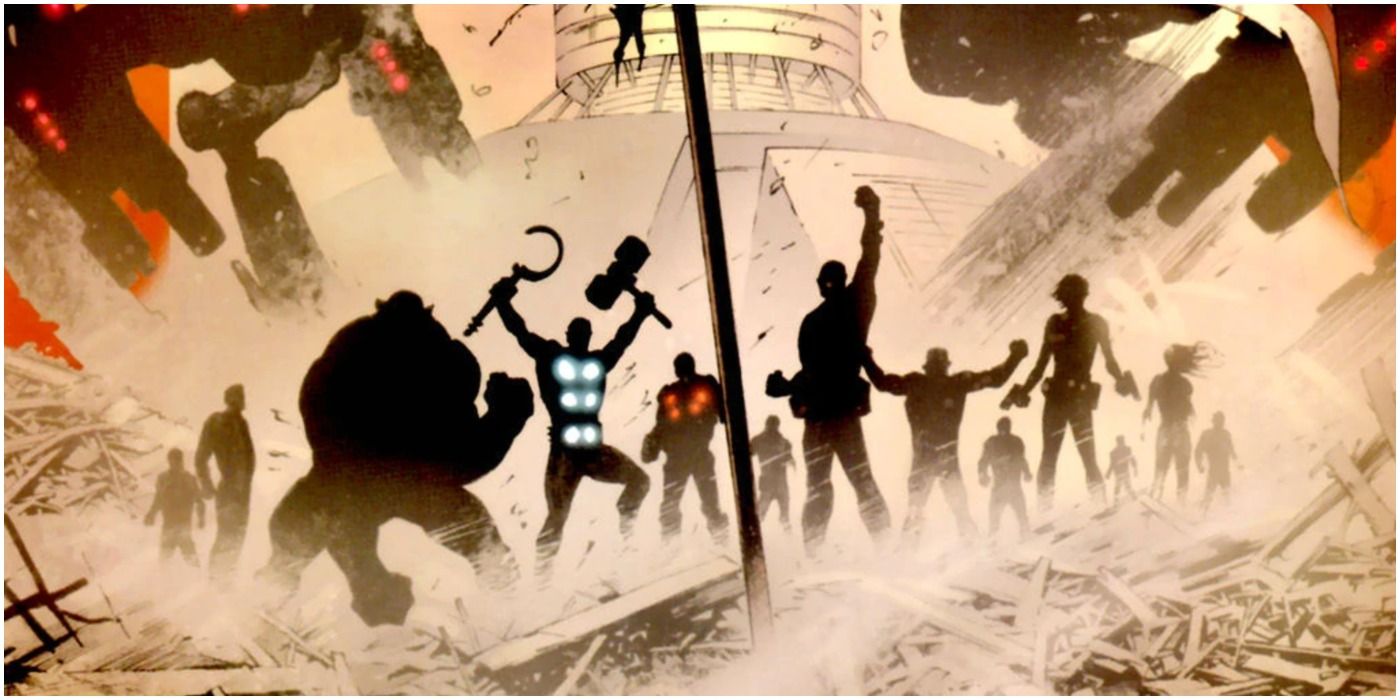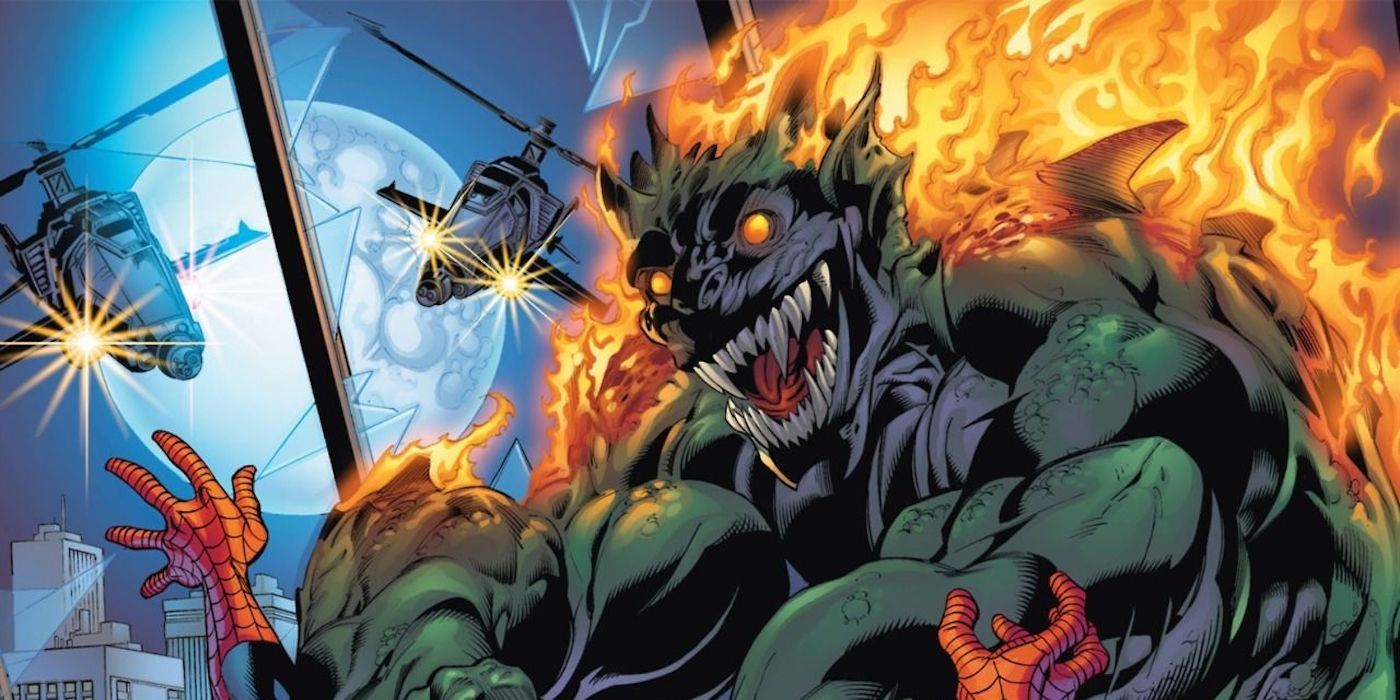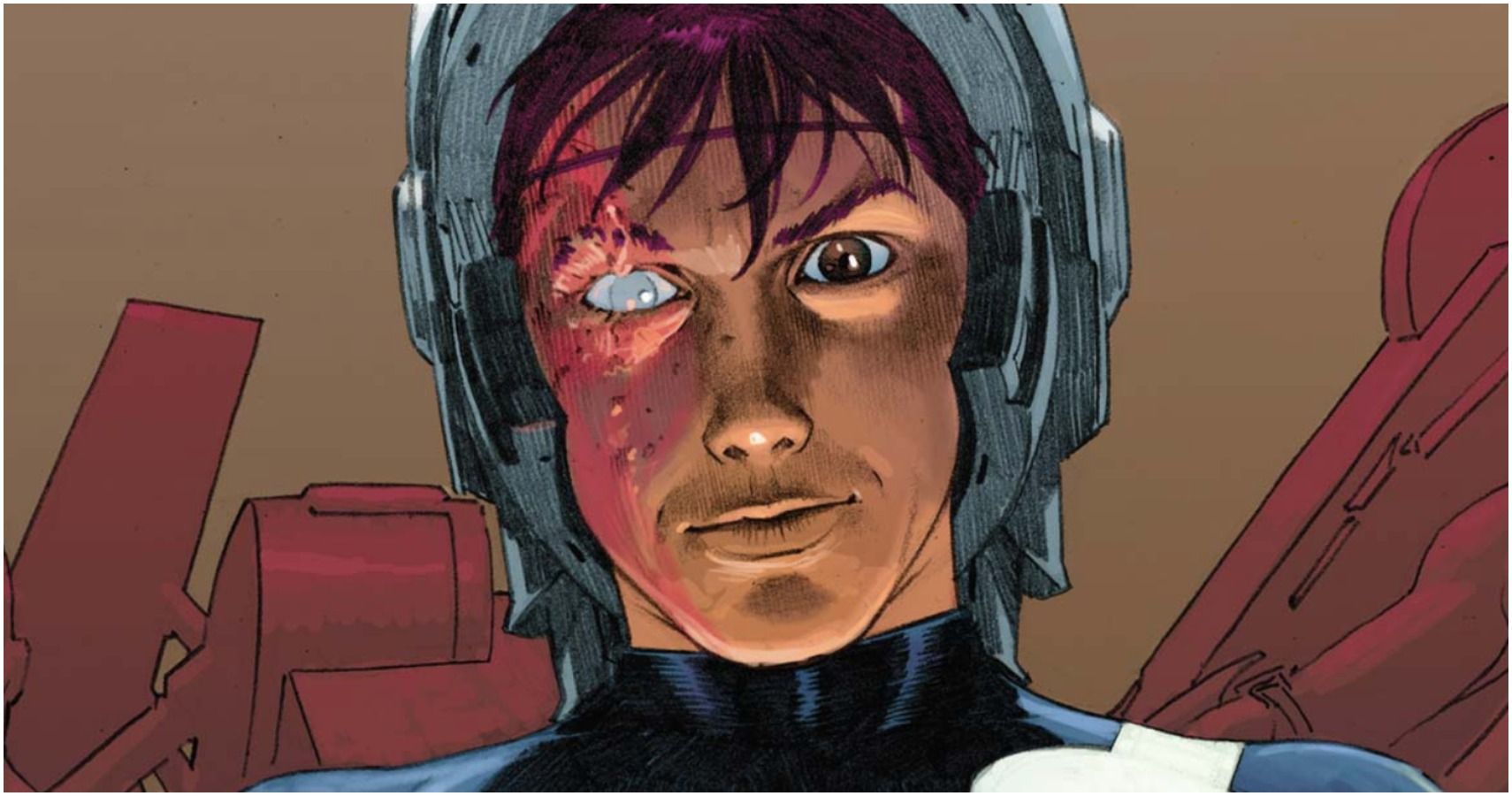When Ultimate Marvel first launched in 2000, its goal was to bring the Marvel Universe into the 21st century, reinventing classic characters without the baggage of decades-long continuity or long out-dated archetypes. This meant Ultimate versions or classic characters varied from familiar to downright unrecognizable.
The villains of Ultimate Marvel tended to be more substantially refurbished than the heroes, resulting in characters that were less gaudy, yet often more one-dimensional, than they had been on Earth-616.
10 Victor Van Damme Pales In Comparison To Doctor Doom, But He Was Just As Much Of A Survivor
Victor Von Doom is the greatest villain in the Marvel Universe. His Ultimate counterpart, Victor Van Damme, is not in the same echelon, but he still has some feats to his name. Unlike Doom, Van Damme's metallic appearance is not armor, but mutated flesh. Van Damme was also directly responsible for his enemies in the Fantastic Four attaining their powers. Once part of the same teen genius group at the Baxter Building institute as the Four, Victor modified the calculations during a teleportation experiment; the resultant error gave the Four and Van Damme their powers.
Some traits did remain intact in Van Damme, though; Earth 616 Doom has a proclivity for survival against all odds, and Van Damme survived two apparent deaths to be the final villain of the Ultimate universe; in Miles Morales: Ultimate Spider-Man, he seized control of HYDRA and faced off with Spider-Man.
9 Ultimate Loki Set The Stage For His MCU Counterpart
During the first volume of Mark Millar & Bryan Hitch's Ultimates, it's left uncertain whether Thor is truly a God or just delusional with the power to back it up. This is cleared up by Loki's appearance in Ultimates 2, orchestrating an invasion of America, the fracturing of the Ultimates, and summoning an army of Norse Creatures to bear down on Washington DC.
The Marvel Cinematic Universe owes a huge debt to Ultimate Marvel - the first Avengers film is basically a softened version of The Ultimates. While the MCU Loki may not possess the reality-warping power of his Ultimate version, the resemblance between the two can't be denied; not a wrinkled old man like the classic Loki, but a lithe pretty boy with flowing raven locks. The casting directors of Thor, Sarah Finn, and Randi Hiller, no doubt had Ultimate Loki's look on the mind when they selected Tom Hiddleston.
8 Spider-Man Never Quite Overcame Ultimate Kingpin
Brian Bendis and Mark Bagley's Ultimate Spider-Man kicked off Ultimate Marvel and remains its crown jewel. Bendis never loses sight of his protagonist, focusing on Peter's daily struggles even more than his superhero shenanigans. While this denied many classic Spidey villains the spotlight, some of Spider-Man's rogues gallery managed to endure as consistent thorns in his side. One was Wilson Fisk.
The Kingpin was seemingly put away at the end of Volume 2, "Learning Curve," when Peter leaked footage of Fisk killing a treacherous lieutenant. Like so often happens in real life, however, Fisk bought his way to freedom. He then bought the merchandising rights to the Spider-Man (something Peter himself couldn't do if he wanted to keep his secret identity), turning his enemy into his greatest money-maker.
7 Ultimate Doc Ock Was A Persistent Thorn In Spider-Man's Side
Doctor Octopus is the usual #2 in Spider-Man's rogues gallery, and the Ultimate version retained that distinction. In USM Volume 3, he defeats Spider-Man in their first encounter, in Volume 10 he abducts Peter then tortures him, then in Volume 17 he's revealed as the mastermind behind the Clone Saga.
Unlike 616 Doc Ock, this Otto Octavius possesses actual superpowers, specifically, ferro-kinesis; he uses these abilities to build himself a new harness after his original was destroyed. Unfortunately, his greater power doesn't save him; in "The Death Of Spider-Man," after Octavius expresses a desire to leave behind his vendetta against Spider-Man and return to science, he's killed by the Green Goblin.
6 Ultimate Hulk Was More Monster Than Man
The Hulk has always walked the line between man and monster, but his Ultimate iteration settled firmly on the latter. For one, there's Doctor Banner himself; after the initial transformation, Bruce is cured of the Hulk.
Yet, in The Ultimates, he chooses to take the serum again after feeling emasculated by his teammates and ex-girlfriend. 800+ civilians in New York City pay for that decision with their lives. From there, the Hulk remains an antagonist, only ever assisting the heroes when his rage is pointed at other villains.
5 Gah Lak Tus Was An Apocalyptic Threat Twice Over
To capture the epic feeling of the original "Galactus Trilogy," the Ultimate version of the villain debuted in 3 linked meta-series ("Ultimate Nightmare," "Ultimate Secret," "Ultimate Extinction"). Collectively known as "The Ultimate Galactus Trilogy" all were written by Warren Ellis with various artists. As rightfully iconic as Jack Kirby's Galactus design was, it would've been out of place in the Ultimate universe, so the villain was reimagined as a fleet of spaceship-sized drones named "The Gah Lak Tus."
This changed when 616 Galactus was transported to the Ultimate universe in mini-series "Hunger" by Joshua Hale Fialkov & Leonard Kirk. After merging with his counterpart, Galactus repurposed the drones as his heralds and nearly succeeded in devouring Earth-1610.
4 Ultimate Magneto Would Make His Classic Counterpart Blush
Ultimate Marvel's early years used two main themes relevant to the 2000s American zeitgeist: genetic mutations as an allegory for WMDs and super-villains as an allegory for terrorists. Magneto and his Brotherhood of Mutant Supremacy personified these themes.
In the first volume of Ultimate X-Men, Magneto attacks Washington DC with reprogrammed Sentinels, massacring civilians while having President George W. Bush, stripped of clothing and dignity alike, grovel at his feet. This sets the trend for Ultimate Magneto; not the militant anti-hero crafted by Chris Claremont, but a return to the genocidal, aspiring dictator originally written by Stan Lee & Jack Kirby. This comes to its head in "Ultimatum," where Magneto drowns NYC and kills dozens of heroes, including his old friend Professor X.
3 The Liberators Were Some Of The Most Politically-Charged Villains In Marvel History
The villains of Millar & Hitch's Ultimates 2 were a reinvention of The Masters Of Evil, minus the corny name and with new political resonance. Rather than past foes out for revenge, the Liberators were an international team of super-soldiers hailing from countries wary of the USA's deployment of the Ultimates abroad.
As America has done to so many other countries, the Liberators (a name clearly referencing the Iraq War) invade the US and attempt regime change. The effort is led by Colonel Abdul Al-Rahman, an Azerbaijani Captain America and, short of Red Son Superman, the most complex villain who Mark Millar has ever written.
2 The Ultimate Green Goblin Refused To Stay Down
The unquestionable arch-nemesis of Spider-Man on both worlds is Norman Osborn. Unlike 616 Osborn, this Norman was directly responsible for Spider-Man's creation thanks to his company's OZ formula which gave Peter his powers.
Another distinction was that, instead of merely dressing up as a Goblin, this Osborn mutated into what can only be described as a demonic, pyro-kinetic Hulk. The Ultimate Goblin also proven himself practically immortal, even by comic book standards, always coming back no matter what. Recently, he's even followed Miles Morales to Earth 616.
1 The Maker Personified How Willing "Ultimate Marvel" Was To Be Daring
Ultimate Marvel started out as a simple revamp, but as the setting accumulated its own continuity baggage, it evolved. Post-"Ultimatum," the Ultimate universe became a place for creators to experiment, to take characters in directions which brand consistency prevented them from taking with the 616 versions.
Personifying this shift is The Maker, aka Ultimate Reed Richards. Shaken to his core, Reed turns to villainy after the Fantastic Four dissolve in Bendis & Rafa Sandoval's Ultimate Doomsday meta-series. In Jonathan Hickman & Esad Ribic's Ultimates, Reed, now "The Maker," goes on to create the "Children Of Tomorrow," super-humans who ravage much of Europe. The Maker proved so popular a villain that an attempted redemption arc by Bendis was undone by Hickman, and even after the Ultimate line was discontinued the Maker was imported to Earth-616, outlasting his own universe.

